
Website Auditor SEO Spider:
Powerful Website Crawler for Fast Audit
- Lightning-fast site audit
- All resources checked: crawl JavaScript, CSS, images, video, etc.
- Crawling like Google, Bing, or Yandex
- Custom extraction of any piece of content
- Scheduling SEO audits and reporting to clients
Fast and comprehensive SEO audit.
Crawl websites with all their subdomains.

Crawl password-protected sites.
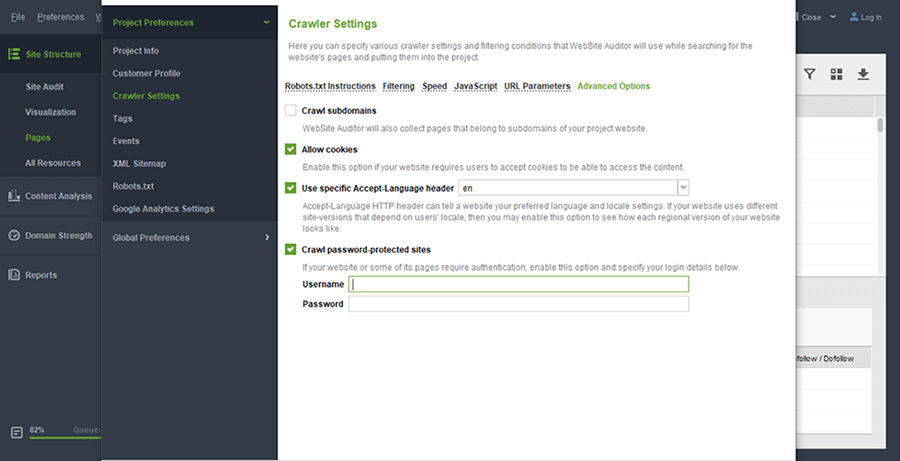
Crawl JavaScript websites and dynamically generated content.

Identify redirect chains.

Audit technical SEO factors to spot slow pages.

Check for broken links and server errors.

Fast audit of all site's images.
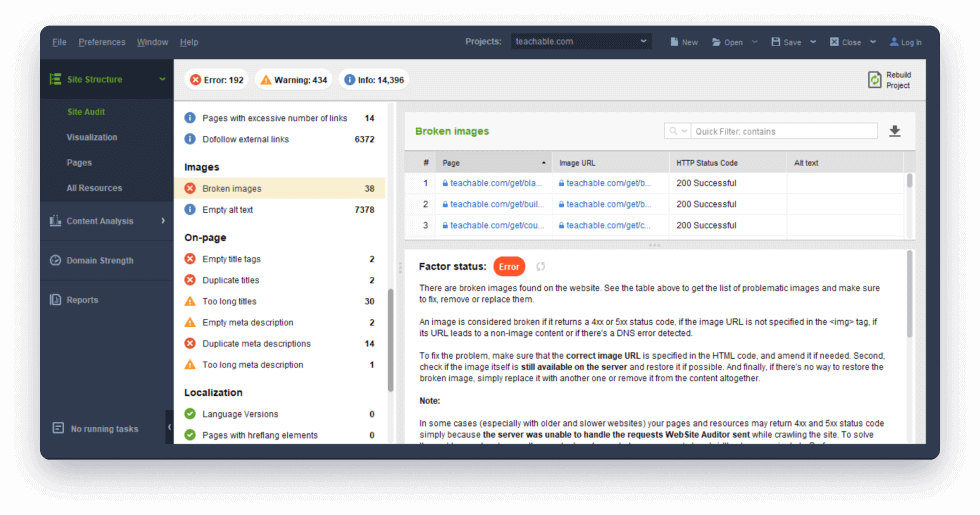
Improve onsite SEO.

Find pages buried too deep on your site.

See how your pages and resources interlink.

Visualize site architecture.

Review microdata and Open Graph markup.

Conduct a localization audit.
Generate XML Sitemaps and robot instructions.
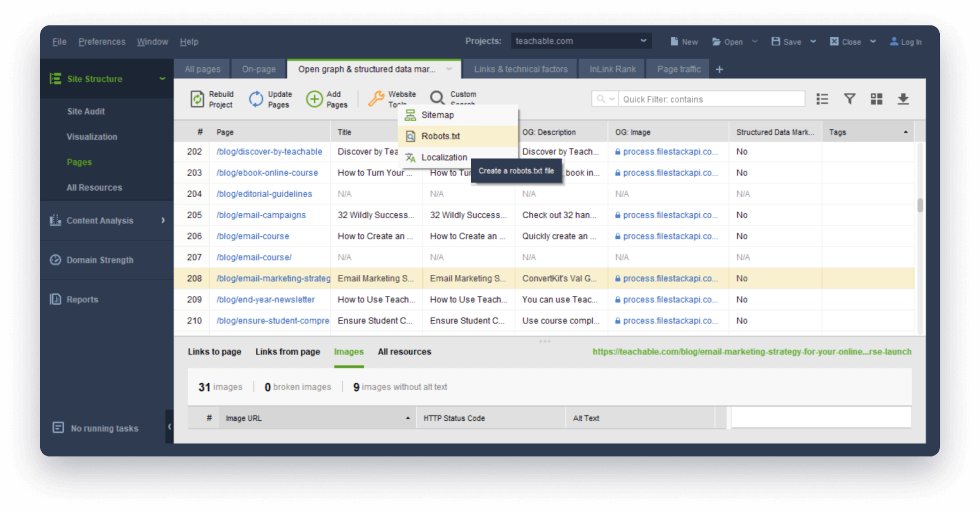
Use Custom Search to get any piece of content on your site.
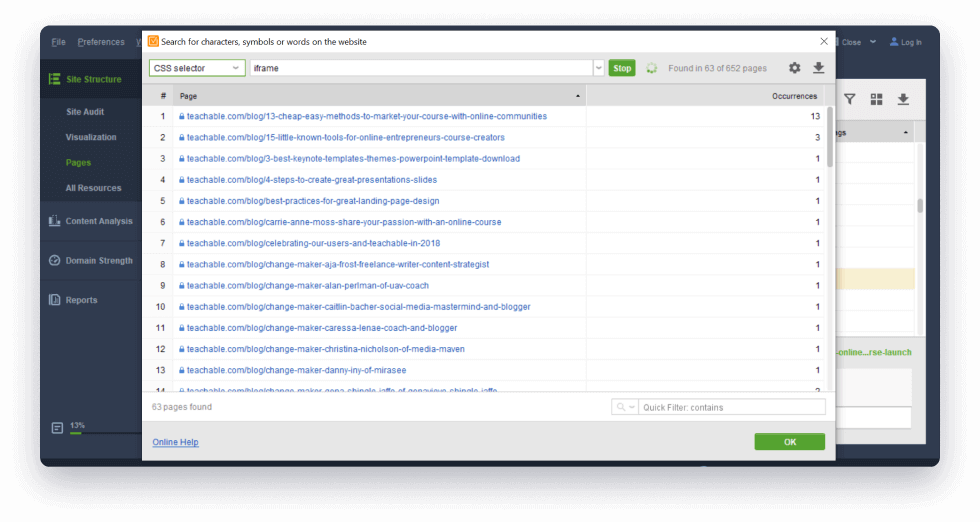
Discover hidden issues with the All Resources submodule.
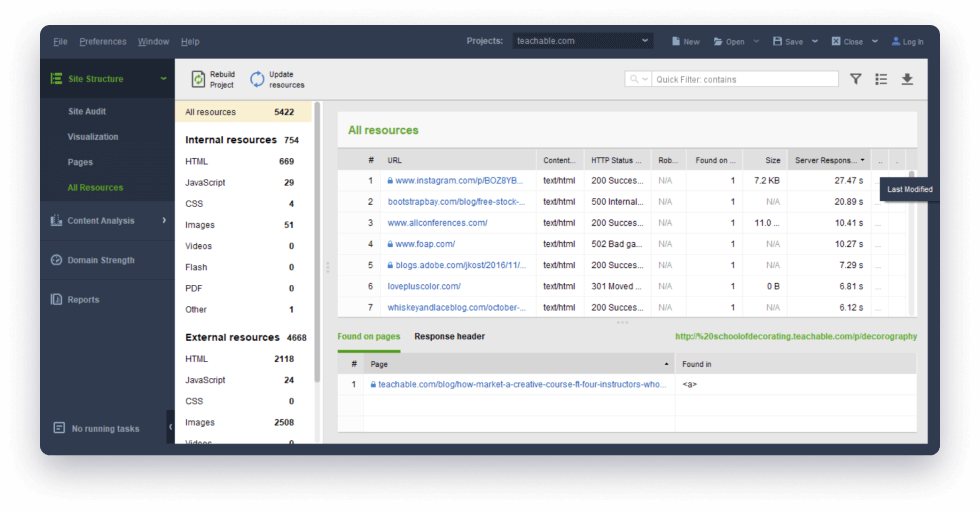
Lots of in-depth options for the tech-savvy.
Customize everything.
- Select a bot or user agent to crawl as;
- Adjust crawl speed;
- Use filters to only crawl pages with (or without) specific symbols in URLs;
- Treat pages with certain URL parameters as different pages (or as the same page) and specify parameters to use or ignore.
See your site like Google robot.
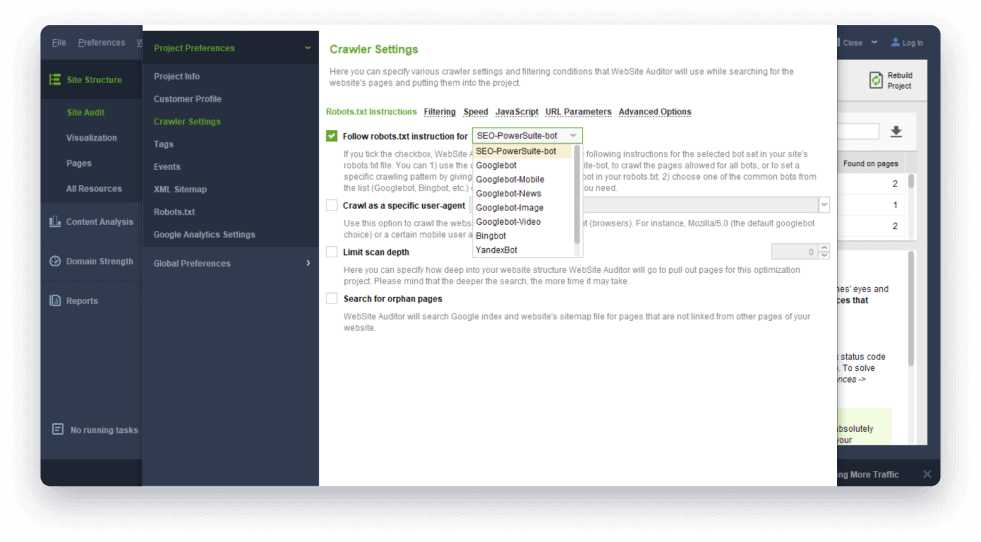
Crawl any site in a matter of minutes.
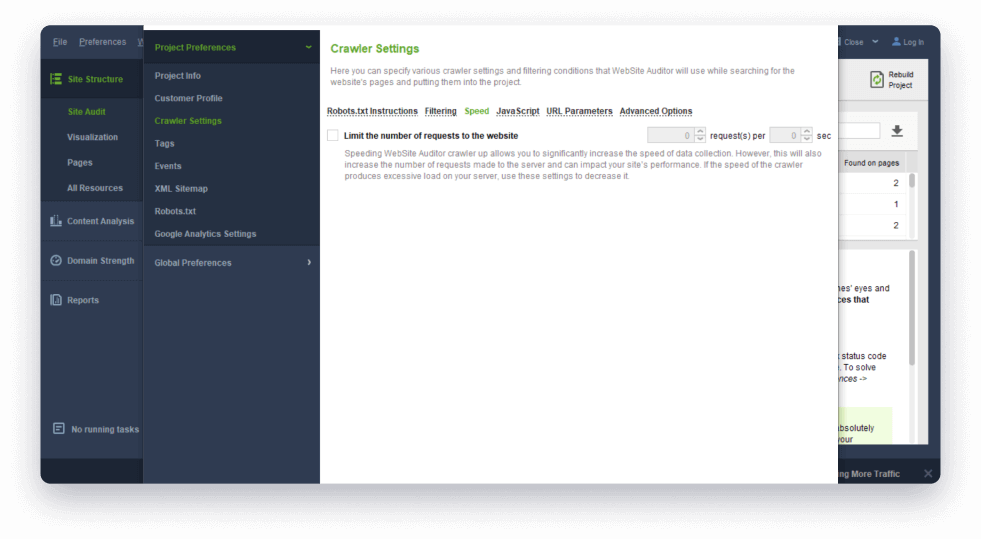
Audit redirects and canonicals.
Search for orphan pages.
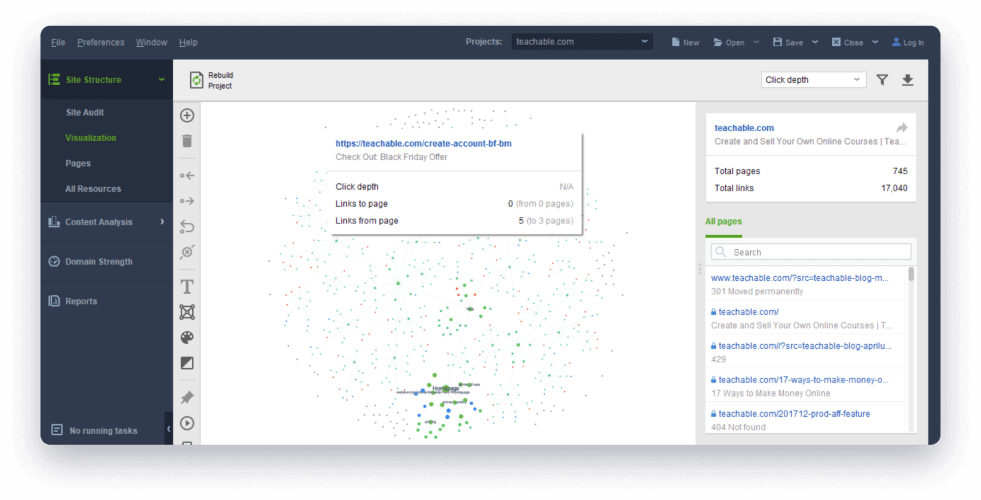
Mind your response headers.
- The 'Server' field can be important if you're looking to implement server-side redirects — different server types call for distinct kinds of redirection. E.g., an Apache server might require .htaccess edits, while an IIS server means you'd need to use the URL Rewrite Module.
- 'Link' is the header field used to indicate a certain type of relationship between the requested resource and other resources. Like the HTML <link> tag, this header field can be used to specify canonicals, hreflang, shortlinks, and many other link types that matter for SEO.
- The 'X-Robots-Tag' header field contains robots directives, including 'noindex' rule. If you've found a page that's not indexed and can't figure out why, this field can be the answer.
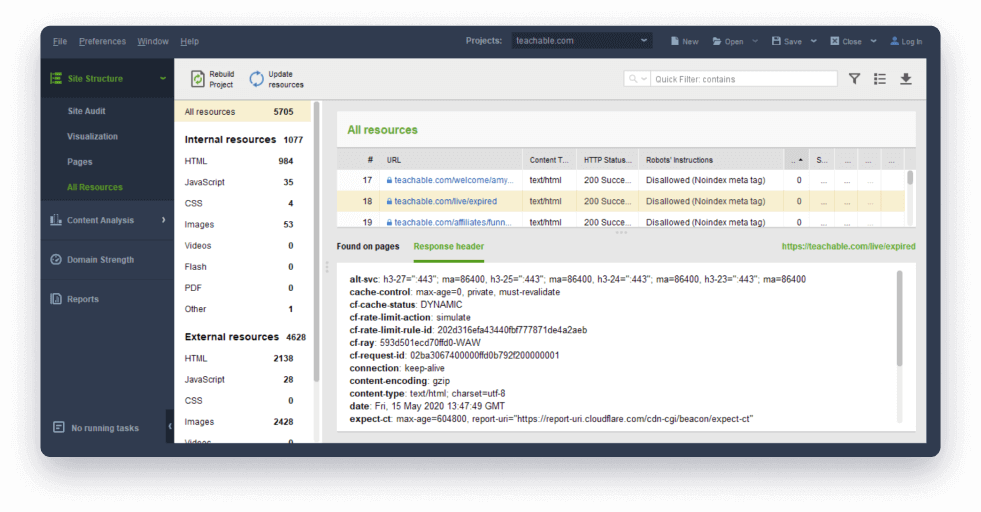
Schedule tasks, save crawls and report to clients.
Stop overlooking site issues that are hurting your rankings.

Excited to try Website Auditor's SEO Spider?
玻璃钢生产厂家徐州玻璃钢装饰造型生产厂家黄冈玻璃钢花坛批发固原玻璃钢坐凳厂家莆田玻璃钢花钵厂家江苏玻璃钢沙发厂北京玻璃钢树池坐凳生产厂家泰州玻璃钢花钵德州玻璃钢种植池生产厂家郴州玻璃钢雕塑厂家直销亳州商场美陈加工揭阳玻璃钢卡通雕塑生产厂家泉州玻璃钢花盆哪家好榆林玻璃钢茶几生产厂家聊城玻璃钢动物雕塑定做鞍山玻璃钢种植池厂家宁德玻璃钢浮雕莆田玻璃钢装饰工程公司舟山玻璃钢花钵定制安康玻璃钢摆件生产厂家梅州玻璃钢树池坐凳生产厂家兰州商业美陈定做长春玻璃钢装饰工程厂佛山玻璃钢摆件厂常州玻璃钢座椅批发南宁商场美陈眉山不锈钢花盆厂家直销池州玻璃钢花瓶制作渭南玻璃钢卡通雕塑多少钱台州玻璃钢制品厂家孝感玻璃钢垃圾桶厂家香港通过《维护国家安全条例》两大学生合买彩票中奖一人不认账让美丽中国“从细节出发”19岁小伙救下5人后溺亡 多方发声单亲妈妈陷入热恋 14岁儿子报警汪小菲曝离婚始末遭遇山火的松茸之乡雅江山火三名扑火人员牺牲系谣言何赛飞追着代拍打萧美琴窜访捷克 外交部回应卫健委通报少年有偿捐血浆16次猝死手机成瘾是影响睡眠质量重要因素高校汽车撞人致3死16伤 司机系学生315晚会后胖东来又人满为患了小米汽车超级工厂正式揭幕中国拥有亿元资产的家庭达13.3万户周杰伦一审败诉网易男孩8年未见母亲被告知被遗忘许家印被限制高消费饲养员用铁锨驱打大熊猫被辞退男子被猫抓伤后确诊“猫抓病”特朗普无法缴纳4.54亿美元罚金倪萍分享减重40斤方法联合利华开始重组张家界的山上“长”满了韩国人?张立群任西安交通大学校长杨倩无缘巴黎奥运“重生之我在北大当嫡校长”黑马情侣提车了专访95后高颜值猪保姆考生莫言也上北大硕士复试名单了网友洛杉矶偶遇贾玲专家建议不必谈骨泥色变沉迷短剧的人就像掉进了杀猪盘奥巴马现身唐宁街 黑色着装引猜测七年后宇文玥被薅头发捞上岸事业单位女子向同事水杯投不明物质凯特王妃现身!外出购物视频曝光河南驻马店通报西平中学跳楼事件王树国卸任西安交大校长 师生送别恒大被罚41.75亿到底怎么缴男子被流浪猫绊倒 投喂者赔24万房客欠租失踪 房东直发愁西双版纳热带植物园回应蜉蝣大爆发钱人豪晒法院裁定实锤抄袭外国人感慨凌晨的中国很安全胖东来员工每周单休无小长假白宫:哈马斯三号人物被杀测试车高速逃费 小米:已补缴老人退休金被冒领16年 金额超20万